 the decade that witnessed a wholesale movement toward early sexual experimentation was not the swinging sixties but the roaring twenties.
the decade that witnessed a wholesale movement toward early sexual experimentation was not the swinging sixties but the roaring twenties.
Details Limited Release: Mar 28, 2003; Rated: Unrated; Length: 67 Minutes; Genres: Erotic, Short; Distributor: Strand Releasing
A lot of people cant imagine gran taking it but.........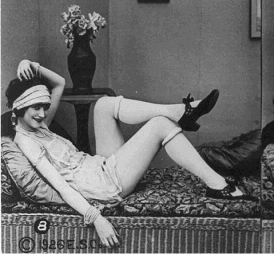
"You can call this sex excitement if you like, but it is sex-excitement of a secretive, furtive sort, quite
 special." --D.H. Lawrence Pornography and Obscenity (1929)
special." --D.H. Lawrence Pornography and Obscenity (1929)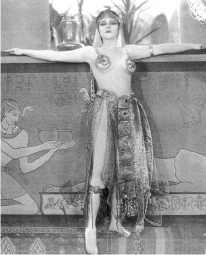
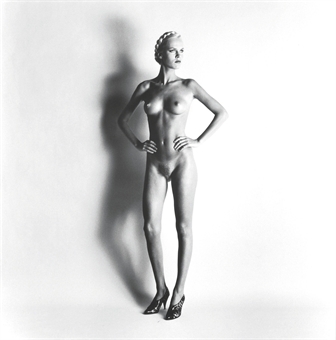 The fascination of The Good Old Naughty Days, a compilation of silent French hardcore porn loops that is getting a full-scale art-house release, is that it reveals how sex remains eternal over time, and also the ways that it changes.
The fascination of The Good Old Naughty Days, a compilation of silent French hardcore porn loops that is getting a full-scale art-house release, is that it reveals how sex remains eternal over time, and also the ways that it changes.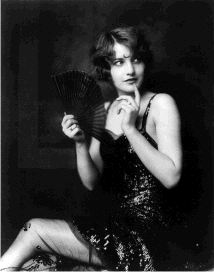
The sheer perversity on display in these shorts, most of them from the 1920s, would give more than a few contemporary porn sites a run for their credit-card fees. There are cavorting encounters between abbots and nuns and headmasters and students
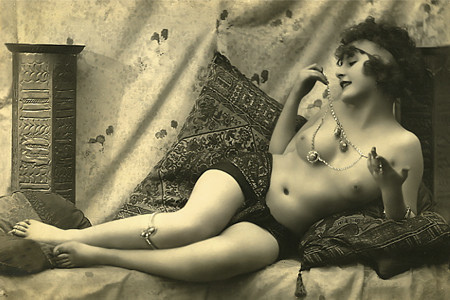 , as well as lots of spanking, an ick! cameo by an eager puppy, a romp with a tall skinny fellow who could be the John Holmes of Paree, and several group scenes that feature the casual integration of male homosexuality in a way that today's highly categorized porn would scarcely allow. If these shorts add up to a larger erotic tale, it's the liberation of women, who start out -- literally -- on the bottom and end up, in the one loop that dates from 1930, beaming with joy as submission gives way to control.
, as well as lots of spanking, an ick! cameo by an eager puppy, a romp with a tall skinny fellow who could be the John Holmes of Paree, and several group scenes that feature the casual integration of male homosexuality in a way that today's highly categorized porn would scarcely allow. If these shorts add up to a larger erotic tale, it's the liberation of women, who start out -- literally -- on the bottom and end up, in the one loop that dates from 1930, beaming with joy as submission gives way to control.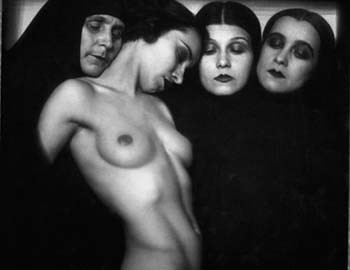 And it wasn't rock and roll-originally a term for the sexual act-but jazz that got the young people all worked up and in need of erotic release. (Yes, jazz was also originally
And it wasn't rock and roll-originally a term for the sexual act-but jazz that got the young people all worked up and in need of erotic release. (Yes, jazz was also originally a term for intercourse.) There is yet another similarity between the decade that has been blamed for
a term for intercourse.) There is yet another similarity between the decade that has been blamed for 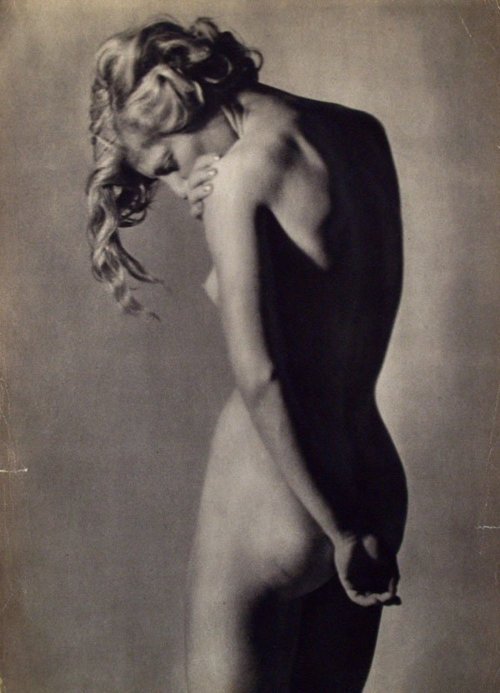 lowering the moral standards of America and the decade that actually deserves the blame.
lowering the moral standards of America and the decade that actually deserves the blame.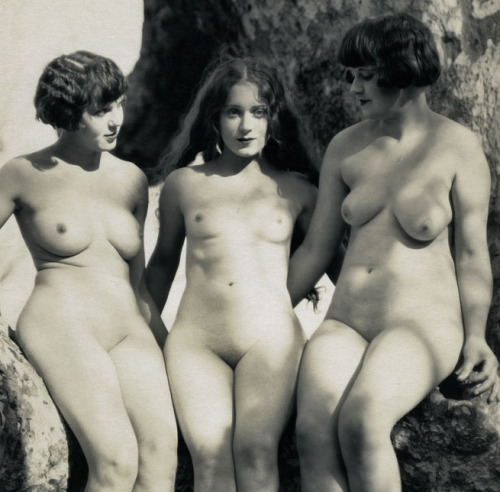 Just as the radicalization of morals and mores in the sixties exploded off college campuses and into the towns and cities of America,
Just as the radicalization of morals and mores in the sixties exploded off college campuses and into the towns and cities of America,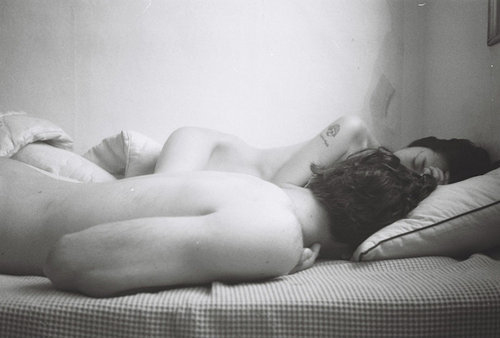 so was the college campus the locus classicus of encroaching promiscuity during the
so was the college campus the locus classicus of encroaching promiscuity during the 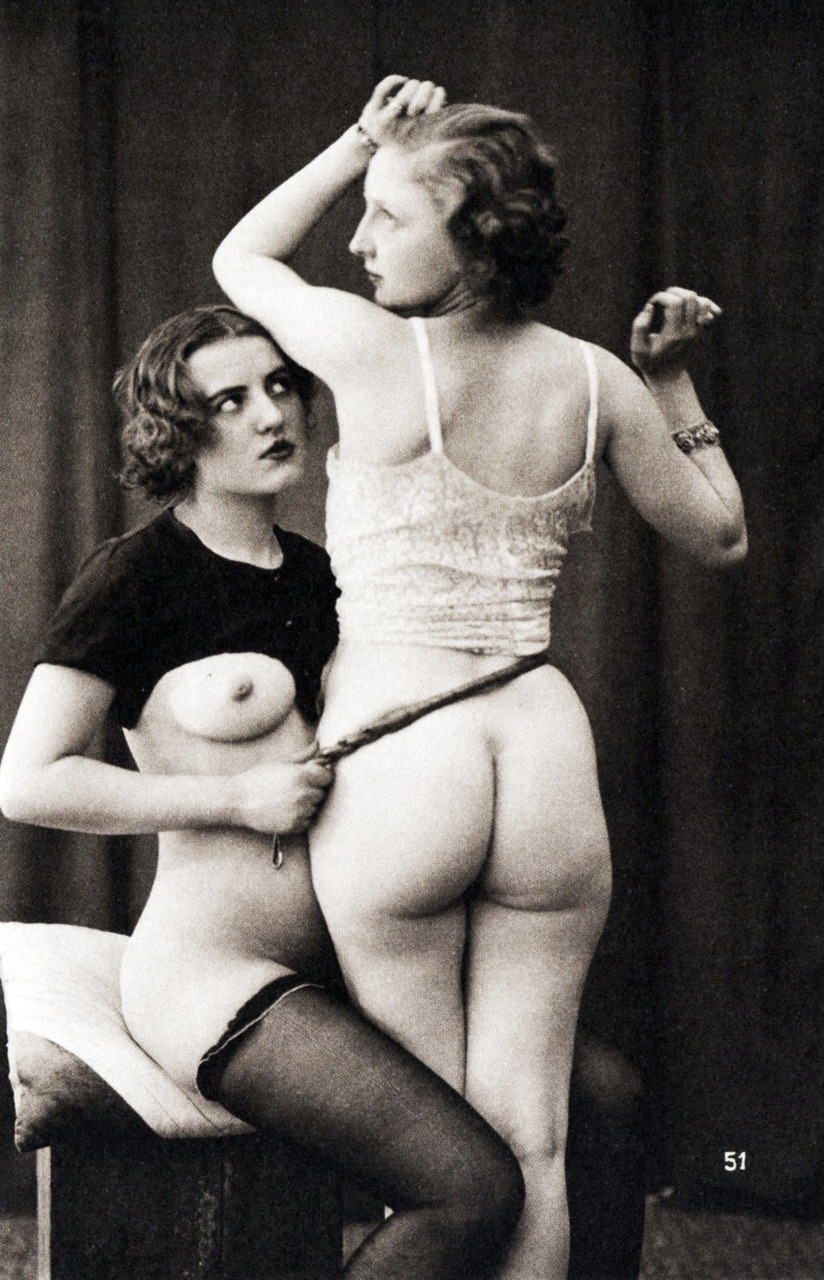 1920s.
1920s.The Roaring 20s was roaring because it was a time of unbridled greed and prosperity. For white  Americans. It was this exceptional prosperity for so many middle-class Americans-prosperity of a sort
Americans. It was this exceptional prosperity for so many middle-class Americans-prosperity of a sort  never before experienced-that resulted in the affordability of college for so many of their kids.
never before experienced-that resulted in the affordability of college for so many of their kids. In fact, between the end of World War I and the beginning of the Depression the proportion of young men and woman under the age of 25 who were in college doubled. It was the decade of the 1920s that saw college life in America transform into what we think of when we think of college. No longer did going away to college merely mean getting an education; this was the era in which college truly became a site for massive socialization. Football games, dances and the wild fads of the era all combined to turn the experience of higher education into an experience of lower education as well.
In fact, between the end of World War I and the beginning of the Depression the proportion of young men and woman under the age of 25 who were in college doubled. It was the decade of the 1920s that saw college life in America transform into what we think of when we think of college. No longer did going away to college merely mean getting an education; this was the era in which college truly became a site for massive socialization. Football games, dances and the wild fads of the era all combined to turn the experience of higher education into an experience of lower education as well.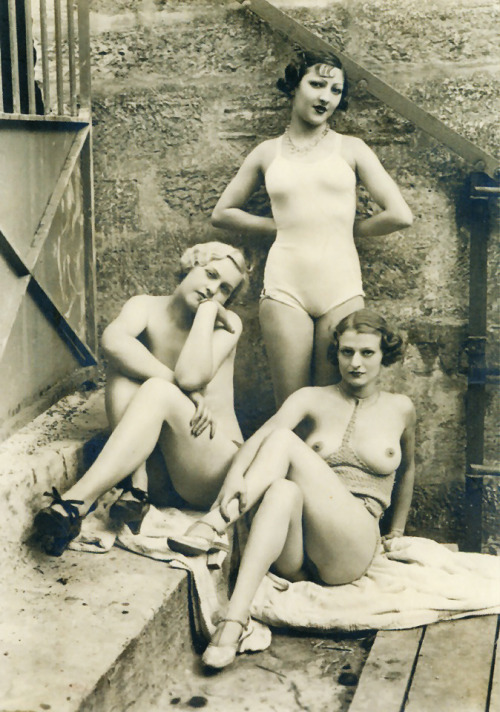
 Americans. It was this exceptional prosperity for so many middle-class Americans-prosperity of a sort
Americans. It was this exceptional prosperity for so many middle-class Americans-prosperity of a sort  never before experienced-that resulted in the affordability of college for so many of their kids.
never before experienced-that resulted in the affordability of college for so many of their kids. In fact, between the end of World War I and the beginning of the Depression the proportion of young men and woman under the age of 25 who were in college doubled. It was the decade of the 1920s that saw college life in America transform into what we think of when we think of college. No longer did going away to college merely mean getting an education; this was the era in which college truly became a site for massive socialization. Football games, dances and the wild fads of the era all combined to turn the experience of higher education into an experience of lower education as well.
In fact, between the end of World War I and the beginning of the Depression the proportion of young men and woman under the age of 25 who were in college doubled. It was the decade of the 1920s that saw college life in America transform into what we think of when we think of college. No longer did going away to college merely mean getting an education; this was the era in which college truly became a site for massive socialization. Football games, dances and the wild fads of the era all combined to turn the experience of higher education into an experience of lower education as well.
This was especially true for young women. The 1920s was every bit as radical in its own way as was the 1960s. Just as the 1960s saw the length of women's skirts shorten dramatically, so did the 1920s. Older people across the nation were shocked to see young women wearing skirts that ended at the knee. Making this even more scandalous was the fact that they were also wearing stockings that were rolled down beneath the knee. Hair was being shorn off at record rates; the hot style of the day was the short bob, most often dyed black. (There aren't enough of those around today in my opinion.) This was also the decade that saw the use of makeup, especially rouge and lipstick, by those who weren't termed harlots or whores.

The evidence indicates that pre-marital sexual activity actually began to rise even before World War I, but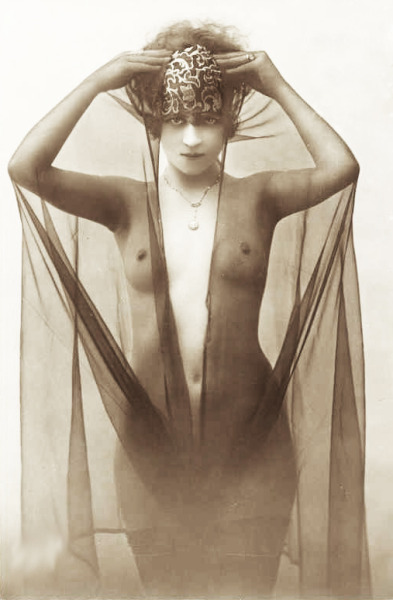 embarked upon a sharp incline during the 1920s as more and more young women went off to college.
embarked upon a sharp incline during the 1920s as more and more young women went off to college. One may also assume, of course, the importance of a particular invention in this rise. I've never seen any hard data-no pun intended-on just how many people lost their virginity in the back seat of a car,
One may also assume, of course, the importance of a particular invention in this rise. I've never seen any hard data-no pun intended-on just how many people lost their virginity in the back seat of a car,  but surely it must be staggering. The invention of the car and the affordability throughout the 1920s can almost
but surely it must be staggering. The invention of the car and the affordability throughout the 1920s can almost be guaranteed as a prime factor in the rise of pre-marital sexual activity during this time.
be guaranteed as a prime factor in the rise of pre-marital sexual activity during this time.  This was also the era of Prohibition and we should always remember that nothing increases the popularity of something more than making it illegal. People who might never have thought to enter a bar a decade earlier
This was also the era of Prohibition and we should always remember that nothing increases the popularity of something more than making it illegal. People who might never have thought to enter a bar a decade earlier now found it incumbent to frequent the speakeasies where liquor was being illegally sold. When something is forbidden it can always be counted upon to become popular on college campuses. Just ask the drug dealers from the 1960s.
now found it incumbent to frequent the speakeasies where liquor was being illegally sold. When something is forbidden it can always be counted upon to become popular on college campuses. Just ask the drug dealers from the 1960s.
The idea that sexual promiscuity dates back to the 1960s has been forever stripped of its myth. As much as people like Newt Gingrich, Jerry Falwell and William Bennett might like to blame the liberal hippies of the 1960s for the mess the world is in today, it would behoove them instead to blame someone else: their own parents. embarked upon a sharp incline during the 1920s as more and more young women went off to college.
embarked upon a sharp incline during the 1920s as more and more young women went off to college. One may also assume, of course, the importance of a particular invention in this rise. I've never seen any hard data-no pun intended-on just how many people lost their virginity in the back seat of a car,
One may also assume, of course, the importance of a particular invention in this rise. I've never seen any hard data-no pun intended-on just how many people lost their virginity in the back seat of a car,  but surely it must be staggering. The invention of the car and the affordability throughout the 1920s can almost
but surely it must be staggering. The invention of the car and the affordability throughout the 1920s can almost be guaranteed as a prime factor in the rise of pre-marital sexual activity during this time.
be guaranteed as a prime factor in the rise of pre-marital sexual activity during this time.  This was also the era of Prohibition and we should always remember that nothing increases the popularity of something more than making it illegal. People who might never have thought to enter a bar a decade earlier
This was also the era of Prohibition and we should always remember that nothing increases the popularity of something more than making it illegal. People who might never have thought to enter a bar a decade earlier now found it incumbent to frequent the speakeasies where liquor was being illegally sold. When something is forbidden it can always be counted upon to become popular on college campuses. Just ask the drug dealers from the 1960s.
now found it incumbent to frequent the speakeasies where liquor was being illegally sold. When something is forbidden it can always be counted upon to become popular on college campuses. Just ask the drug dealers from the 1960s.
 Researchers are finding that the sex experts Masters and Johnson were wrong when they claimed that female and male desire were alike. New studies suggest that women need to be aroused physically or psychologically to get in the mood for sex. Unlike men, who can get aroused by the sight of a buxom babe in a beer commercial, women rely on different--and subtler--cues. A woman may be responsive to intimate conversation--or a caring gesture by her husband.
Researchers are finding that the sex experts Masters and Johnson were wrong when they claimed that female and male desire were alike. New studies suggest that women need to be aroused physically or psychologically to get in the mood for sex. Unlike men, who can get aroused by the sight of a buxom babe in a beer commercial, women rely on different--and subtler--cues. A woman may be responsive to intimate conversation--or a caring gesture by her husband.
In the hot spring in 1930 : http://drawingwithmyfrienddick.blogspot.fr/2015/01/disguise-en-maillot-de-bain-des-annees.html
ReplyDelete